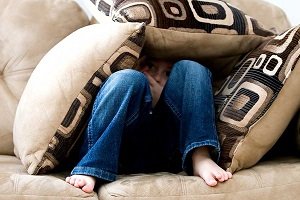How to Get Rid of Neurasthenia
TweetIn the 19th century, there was a disorder called neurasthenia, which was described as a disease in which the patient experienced severe fatigue. It was believed to be more common among the educated than the unskilled, and the cause was thought to be environmental - it was brought on by what are today regarded as stress factors such as emotional upset, bad experiences and over work. The cure was said to be rest.
Neurasthenia is still diagnosed in Oriental countries such as Hong Kong and Taiwan. In the west, however, fatigue is seen to be a symptom of some other disorder rather than a disease in its own right.
It has been noted by some psychiatrists that what is currently known as chronic fatigue syndrome (CFS) bears a strong resemblance to what the Victorians called neurasthenia. CFS used to be termed 'yuppie flu' because it was first identified as a problem experienced by those who were striving to climb the ladder of success and it often occured after the person had a viral infection, such as flu. It was also known as ME, but chronic fatigue syndrome is now regarded as a better name on account of the symptoms.
The term was introduced into psychiatry in 1869 by G. M. Beard, an American neurologist. Used by Freud to describe a fundamental disorder in mental functioning, the term was incorrectly applied to almost any psychoneurosis and has been largely abandoned.
What are the synonyms of Neurasthenia?
Neurasthenia is altternately known as Primary Neurasthenia, Cardiac Neurosis, Chronic Asthenia, Da Costa's Syndrome, Effort Syndrome, Functional Cardiovascular Disease, Soldier's Heart, Subacute Asthenia
What are the causes of Neurasthenia?
The cause of Neurasthenia remain unknown however like most disorders, certain predisposing factors may play an important part, chief of which may be mentioned heredity factors, occupation (high stress occupations), age (tends to occurs between 20 and 55 years of age), and sex (predominantly see in males).
What are the symptoms associated with Neurasthenia?
Neurasthenia is a mental disorder triggered by stress or anxiety. Symptoms may include
- weakness or fatigue, which may be accompanied by chest pain
- rapid intense heartbeat that may be irregular (palpitations, tachycardia)
- cold, clammy hands and feet
- abnormally rapid breathing (hyperventilating)
- dizziness or faintness
- periodic sighing
- sweating for no apparent reason
- Be restless fidgeting.
Diagnostic criteria for neurasthenia include:
- Persistent and distressing symptoms of exhaustion after minor mental or physical effort including general feeling of malaise, combined with a mixed state of excitement and depression.
- Accompanied by one or more of these symptoms: muscular aches and pains, dizziness, tension headache, sleep disturbance, inability to relax and irritability.
- Inability to recover through rest, relaxation or enjoyment.
- Disturbed and restless, unrefreshing sleep, often troubled with dreams.
- Duration of over three months.
- Does not occur in the presence of organic mental disorders, affective disorder, panic or generalized anxiety disorder.
Facts and Tips about Neurasthenia
- Neurasthenia term is related to condition which shows symptoms of weakness, nervousness, headache, loss of memory, neuralgia, depressed mood, irritability, lack of concentration, hypochondria and hyperventilating.
- Exact cause is unknown but some other causes that are responsible for neurasthenia are heredity factors, pressure, high stress work which result in weakness of nervous system.
- Neurasthenia is sub divided into angiopathic neurasthemia, angioparalytic neurasthenia, gastric neurasthenia, pulsating neurasthenia, neurasthenia gravis, neurocirculatory asthenia and neurasthenia precox.
- Neurasthenia is common in men having age between 20 to 55 years.
- Some options to treate neurasthenia are balanced diet, electrotherapy, no steroidal anti-inflammatory drugs, nonsedating antihistamines used.
- It first appeared in 1886 and was present in another category called ‘psychoneuroses’ in 1932. After 1941 this disorder disappeared altogether from everywhere.
Learn more on Neurasthenia and Masked Depression

how to cure neurasthenia? - pink

Sometimes crying or laughing
are the only options left,
and laughing feels better right now.

Current Issue
 Self Help Leaflets Take the help of our self help leaflets or booklets. |
 The DG Magazine All about living with depression |


















